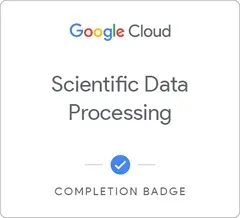
Build LookML Objects in Looker

Explore the essentials of Build LookML Objects in Looker▼
Course Feature
![]() Cost:
Cost:
Free
![]() Provider:
Provider:
Qwiklabs
![]() Certificate:
Certificate:
Free Certification
![]() Language:
Language:
English
![]() Start Date:
Start Date:
On-Demand
Course Overview
❗The content presented here is sourced directly from Qwiklabs platform. For comprehensive course details, including enrollment information, simply click on the 'Go to class' link on our website.
Updated in [May 19th, 2023]
This course, Build LookML Objects in Looker, is designed to help learners gain proficiency in LookML, the language used to define the structure and content of Looker models. Learners will learn how to design and build new dimensions and measures, views, and derived tables, set measure filters and types based on requirements, update dimensions and measures (change names, use aliases), build and refine Explores, join views to existing Explores, and decide which LookML objects to create based on business requirements.
At the end of this course, learners will be able to confidently create LookML objects in Looker and understand the implications of their decisions. They will also be able to apply their knowledge in an interactive hands-on environment and receive a skill badge from Google Cloud in recognition of their proficiency with Google Cloud products and services.
This course is divided into four modules. In the first module, learners will be introduced to LookML and its components. They will learn about the different types of LookML objects and how to create them. They will also learn how to set measure filters and types based on requirements.
In the second module, learners will learn how to update dimensions and measures, including changing names and using aliases. They will also learn how to build and refine Explores and join views to existing Explores.
In the third module, learners will learn how to decide which LookML objects to create based on business requirements. They will also learn how to debug LookML objects and troubleshoot errors.
In the fourth and final module, learners will complete a final assessment challenge lab. Upon successful completion of the lab, they will receive a skill badge from Google Cloud in recognition of their proficiency with Google Cloud products and services.
This course is designed for learners who are interested in learning how to create LookML objects in Looker. It is recommended that learners have a basic understanding of Looker and SQL before taking this course.
[Applications]
Upon completion of the Build LookML Objects in Looker course, learners can apply their knowledge to create LookML objects for their own projects. They can also use the skill badge to demonstrate their proficiency in Looker to potential employers.
[Career Paths]
Career Paths:
1. Data Analyst: Data analysts are responsible for collecting, organizing, and analyzing data to identify trends and patterns. They use their findings to inform business decisions and strategies. Data analysts must have strong analytical and problem-solving skills, as well as the ability to interpret and communicate data effectively. With the increasing demand for data-driven decision making, the demand for data analysts is expected to grow.
2. Business Intelligence Developer: Business intelligence developers are responsible for designing and developing business intelligence solutions. They must have strong technical skills, including the ability to design and develop data models, create reports and dashboards, and develop data visualizations. As businesses become increasingly reliant on data-driven decision making, the demand for business intelligence developers is expected to grow.
3. Data Scientist: Data scientists are responsible for collecting, analyzing, and interpreting large amounts of data to identify trends and patterns. They must have strong analytical and problem-solving skills, as well as the ability to interpret and communicate data effectively. With the increasing demand for data-driven decision making, the demand for data scientists is expected to grow.
4. Data Engineer: Data engineers are responsible for designing, developing, and maintaining data systems. They must have strong technical skills, including the ability to design and develop data models, create data pipelines, and develop data visualizations. As businesses become increasingly reliant on data-driven decision making, the demand for data engineers is expected to grow.
[Education Paths]
Recommended Degree Paths:
1. Bachelor's Degree in Computer Science: This degree program provides students with a comprehensive understanding of computer science fundamentals, including programming, software engineering, and data structures. Students will also learn about the latest trends in technology and how to apply them to real-world problems. Additionally, they will gain experience in developing and deploying applications, as well as developing and managing databases.
2. Master's Degree in Data Science: This degree program focuses on the application of data science principles to solve complex problems. Students will learn about data mining, machine learning, and artificial intelligence, as well as how to use these technologies to create predictive models and analyze data. Additionally, they will gain experience in developing and deploying applications, as well as developing and managing databases.
3. Doctoral Degree in Artificial Intelligence: This degree program focuses on the development of artificial intelligence systems and their applications. Students will learn about the latest trends in AI, including deep learning, natural language processing, and computer vision. Additionally, they will gain experience in developing and deploying AI applications, as well as developing and managing AI-based systems.
Developing Trends:
1. Cloud Computing: Cloud computing is becoming increasingly popular as a way to store and access data. This technology allows for the storage and retrieval of data from anywhere in the world, making it easier for businesses to access and analyze data.
2. Big Data: Big data is becoming increasingly important in the world of data science. This technology allows for the storage and analysis of large amounts of data, making it easier for businesses to make decisions based on data-driven insights.
3. Machine Learning: Machine learning is becoming increasingly important in the world of data science. This technology allows for the development of algorithms that can learn from data and make predictions about future events.
Course Provider





